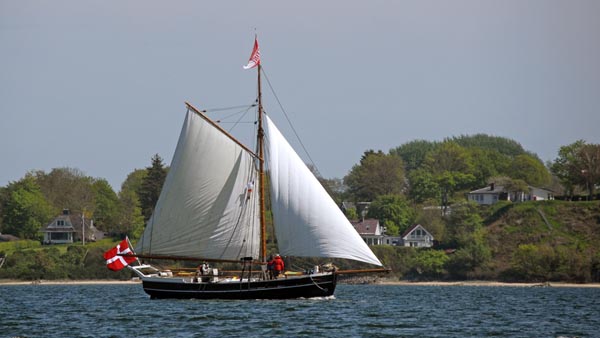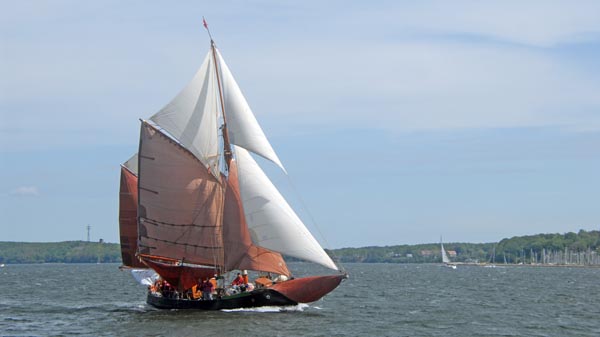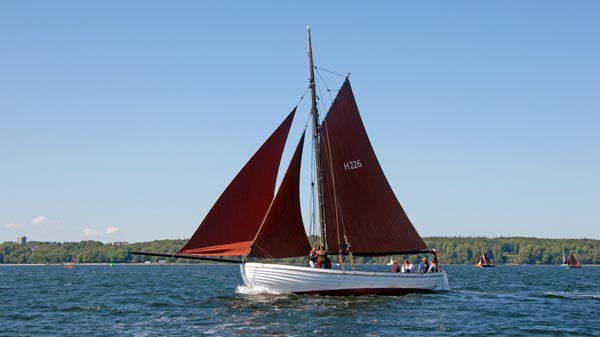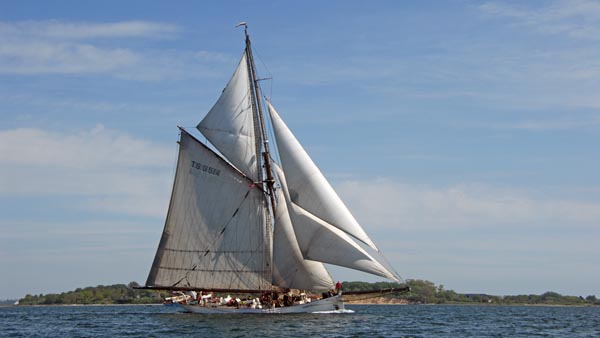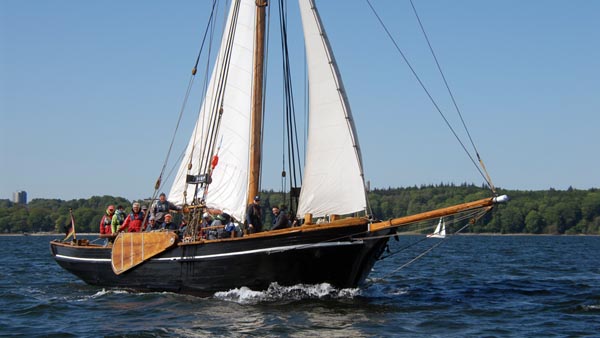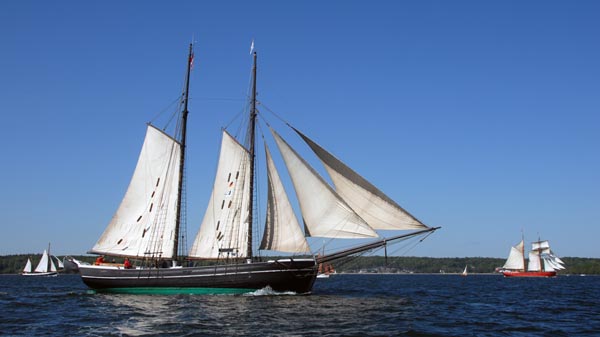Last update:
42nd Rumregatta Flensburg 2023
Regatta for traditional sailing ships, where it is important to become second!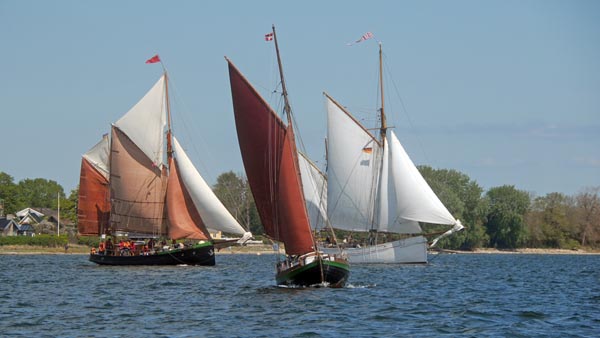
Rumregatta turn around at the buoy
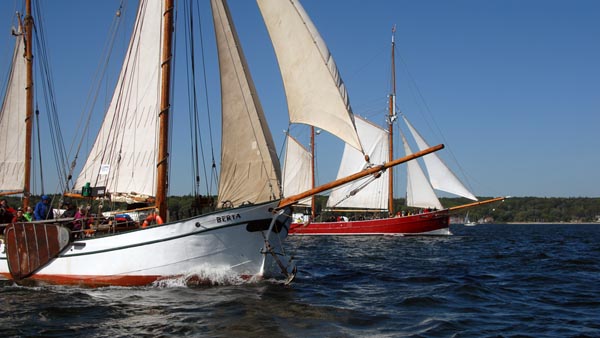
Regatta in the Flensburg Bay
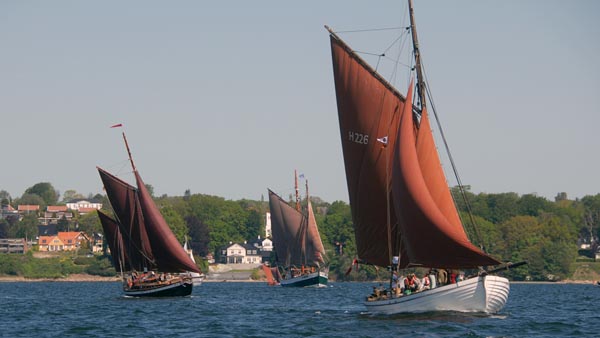
Sailing to the Rumregatta
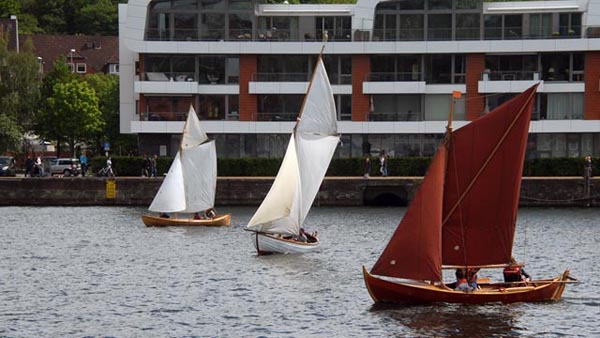
Regatta for small fishing boats in the Flensburg harbour
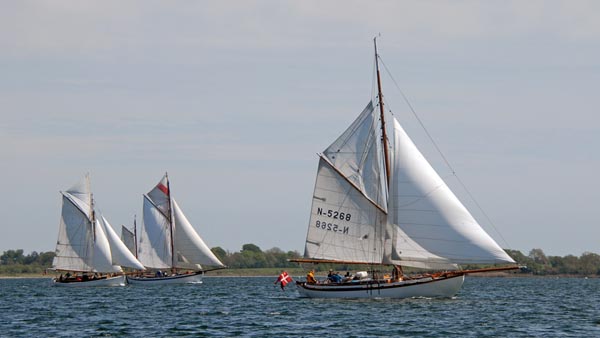
Fjord regatta to Flensburg
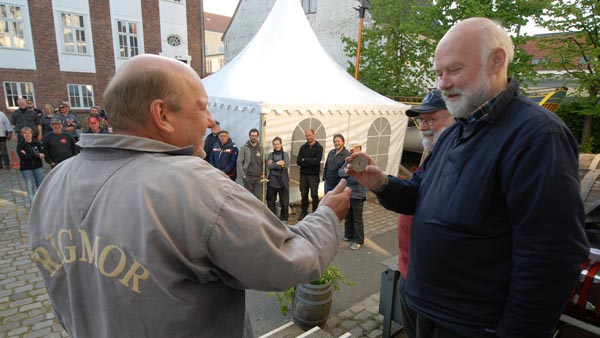
Honors at the Fjord Regatta
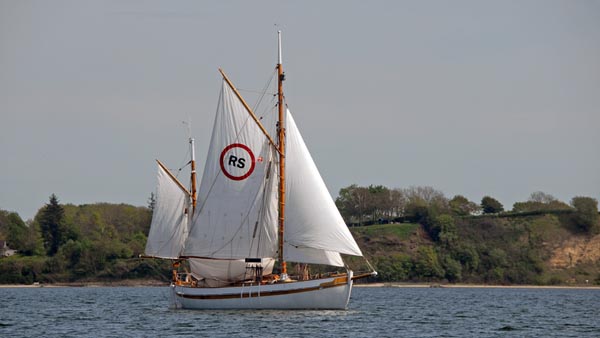
Colin Archer "Christina"
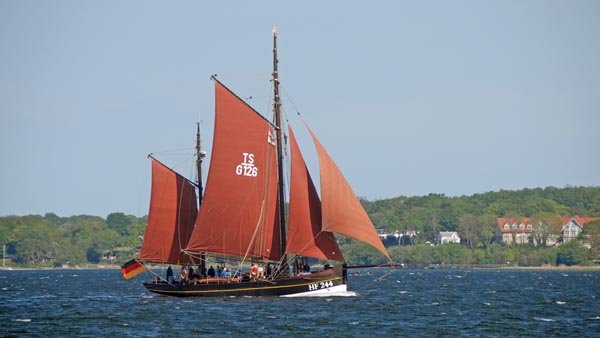
Finkenwerder Cutter "HF244 Astarte"
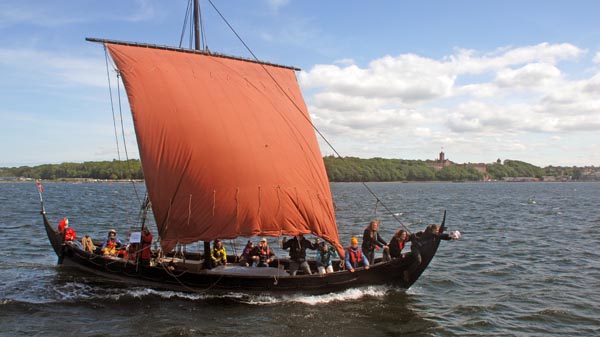
Viking ship "Freja Byrding"
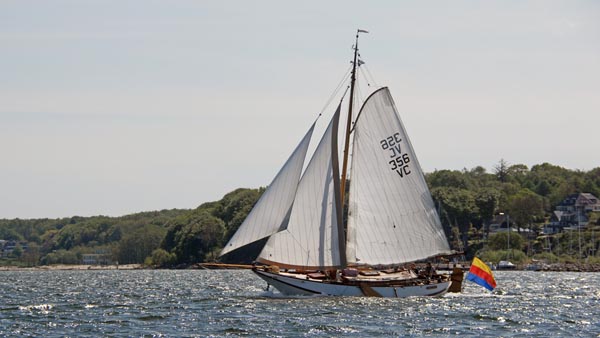
Hoogaars "Johanna von Amrum"
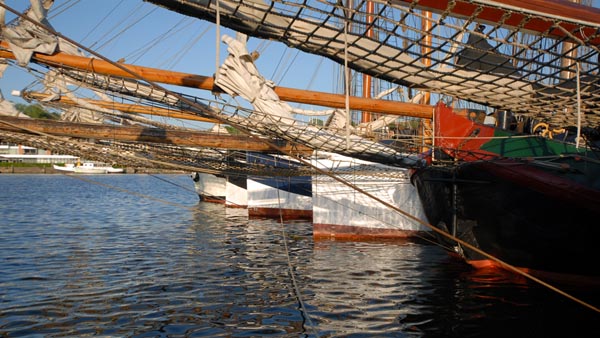
Sailing ships in the harbour of Flensburg
The Rumregatta is the start of the season for traditionally rigged sailing ships in Germany every year. Ship lovers don't want to miss it. So in this year too, as the 42nd edition of the
irresponsible squadron trip on the Flensburg Bay took place.
There are years when you wait longer for the season to start. That's what happened to me this spring. April and early May were still cold and often rainy in our area. Then the sun came along
with some strength at just the right time. And after we were still skeptical about the wind after the storm experiences last year, a really optimal weather situation developed, which
made it easier for ships to arrive and which offered the prospect of relaxed sailing.
The registrations of the sailing ships for the Rumregatta 2023 were initially only sparse. Perhaps there is a misunderstanding here that sailing ships and crews that are there almost every year
don't have to register. That's not the case and it makes the preparation easier and increases the anticipation for the event immensely if you know who is actually planning to be there.
My experience began the day before. A few very enthusiastic wooden boat friends always meet here in the harbour for smaller fishing boats in Flensburg. Featuring replicas of traditional fishing boats
of different regions, mostly at home on the Baltic Sea coast, old traditions are revived in a relaxed atmosphere when you sail a small regatta in the harbour of Flensburg,
also row a certain distance and fish for bottles then. This time there were 18 registered boats and their crews with a lot of vigor and visible fun sailing the course in the
Flensburg harbour. A 19th boat joined shortly before the start of the regatta and is a sign that the crews of the youth fishing boats from the local area are enjoying this
exciting and entertaining event as well. You can discover the start of the rum regatta for yourself, enter into a fair competition with like-minded people or simply
have fun on the water. It's a pleasure and best advertising for youth work under sail when you can follow the sailing skills of the mostly young crews from shore.
The boats with the furthest journey to the regatta were the "Knipdul" from Poland and "Albatross" from Fareham in England.
After an hour of watching the small fishing boat regatta, I boarded the "Maria Merit" to meet the larger sailing ships on their way from Sonderburg to Flensburg.
Actually, we should follow the finish of the Fjord regatta at a buoy in the Flensburg Fjord. We were too late for that. The wind came from for the regatta participants favorable
direction and very quickly drove them to their destination this year. We listened to what was happening at the finish buoy over the radio and then saw a few more
of the regatta participants, who mostly steered towards the destination of Flensburg harbor under sail. This year the wind and weather were ideal for the Flensburg Fjord Regatta
and the sailing ships so very fast on the way. In the evening there was another highlight in the courtyard of the Flensburg Maritime Museum. At the award ceremony, there were
also anniversaries, such as the now 170 years old "Rigmor", and loyal guests like the "Johanna von Amrum" considered. At the end, an old gaffler's song was
sung, which was written years ago in many stanzas and characterizes the people and scene around the gaff-rigged sailing ships very well.
At this rum regatta, of course, I saw old friends again. These included the three former loggers "Ryvar", "Belle Amie" and "BV2 Vegesack", hajkutters like
"Bodil", "Elsa Margrethe", "Jane", "Dagmar Aaen", "Ebba Aaen" and "Dana". I was particularly impressed this year by the
"Nobile", which was also once a logger but is now rigged as a racing yacht in the style of the late 19th century Americas Cuppers. She was impressively presented at the
Fjord Regatta and the Rumregatta with all sails up.
I had not seen some sailing ships before. These included Danish ships such as the jagt "Kirstine" and the kattegatbåd "H223 Svalen", Colin Archer "Grimsø" and the
rescue cutter "Christina RS". Also the "Engelina" I think took part in the Rumregatta in Flensburg for the first time. Finkenwerder cutter
"HF244 Astarte" from Bremerhaven had not been there for a long time. The only participating viking ship was "Freja Byrding" from Denmark.
Of course we again experienced an extensive price giving ceremony in Flensburg. The crew around the ships "Clara" and "Seestern" from the
Kiel youth cutter project conributed a song. I can still hear their anthem to this day. The "Seestern" was particularly emphasized by the laudator at
the award ceremony for hoisting 11 sails at a gaff ketch rigged ship!
On Sunday, the Rumregatta ended quietly, but of course with the blasting of the ship's typhoon to say goodbye when leaving the harbour. Thanks to the
"A-team" and the crew of the "Gesine" for all experiences.
Rum and Rumregatta
Where does this special relationship come from?Flensburg is referred to as the rum city in tourist guides. This is a reminder that the citizens of Flensburg became prosperous through the trade and production of rum. However, it was not only the industriousness of the merchants and sailors that made the city so rich. Above all, it was also the exploitation of the Danish colonies in the Caribbean. At that time until 1864 the city belonged to Denmark. Today's Virgin Islands, then still the Danish West Indies, were supplied with people enslaved in Africa. Slaves were mainly needed for the cultivation of sugar cane. Rum was made from the sugar cane. With an exhibition "Rum, Sweat and Tears" from 2017, this was reflected that Flensburg entrepreneurs practised or supported slavery and the exploitation of the people in the Danish colonial areas. This made profit possible and was the basis for the economic boom of Flensburg in the 18th and 19th centuries. Flensburg is said to have once had up to 200 rum houses and distilleries.
How the rum is made?
The main ingredient used to make rum is sugar cane. The stalks are chopped up and then crushed. Sugar cane juice is obtained from
this. Molasses is a waste product. Both can form the basis for the production of rum. The molasses or sugar cane juice is fermented
with the addition of yeast and water, then distilled and aged in oak barrels. Rum is made in many countries around the world and
each country has its own methods of doing this, resulting in different aromas and flavors. So will the taste determined by the
way the raw materials are processed and the type and duration of maturation.
From 1885, a bulk duty was levied on the import of rum to Flensburg. As a result, rum was introduced as a kind of high-proof
concentrate. Every rum house put own rums by mixing the concentrate with water and pure alcohol. This is how the so-called rum
blend was created. Most rums today are a blend of various individual distillations.
Rum and seafaring
When you think of rum, you also have thoughts of pirates, the Caribbean or seafaring in general. In the basement of the Flensburg
Maritime Museum, a special department documents the rum history of the city. Where does the closeness of seafaring and maritime
traditions to this alcoholic beverage come from?
One reason for the introduction of a daily ration of rum in the Royal Navy in the 17th and 18th centuries was that drinking water
was often spoiled in the wooden barrels on the long sea voyages in the days of discovery. Alcohol prevented this and also made the
crews fight more freely in naval battles.
Today, the so-called maneuver drink is drunk together as a reward for a successful maneuver or a particularly nice moment on board.
And that could also have been one of the reasons why the rum regatta is now called the rum regatta and why the most important
prize that can be won here is a 3 liter bottle filled with rum.
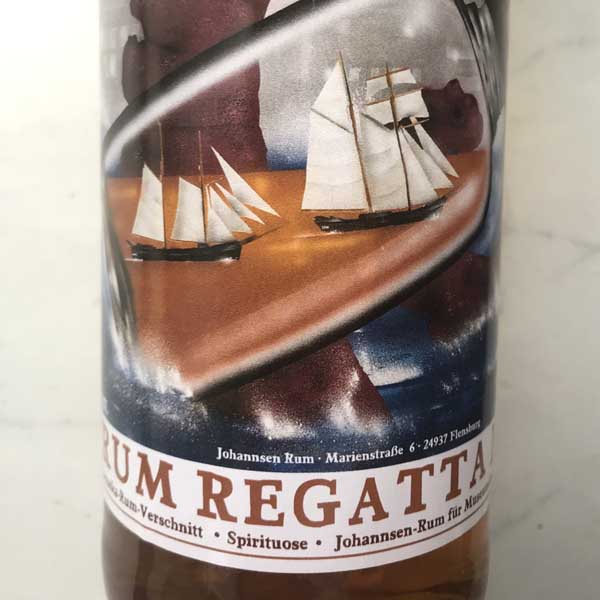
Regatta rum of the sponsor Johannsen

